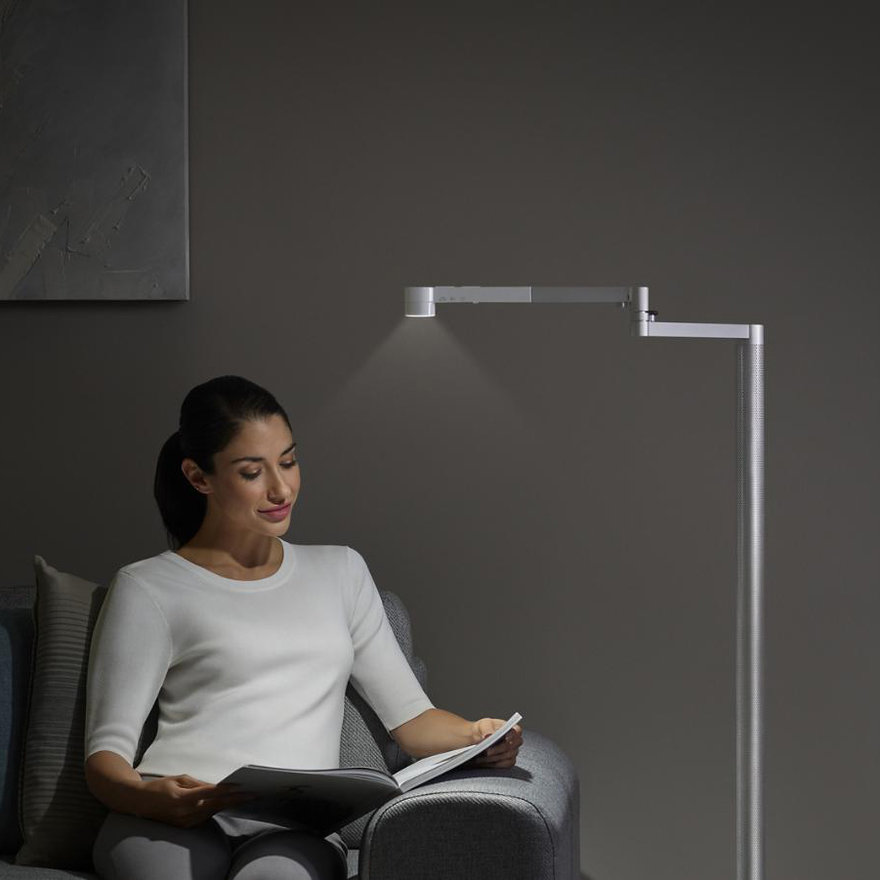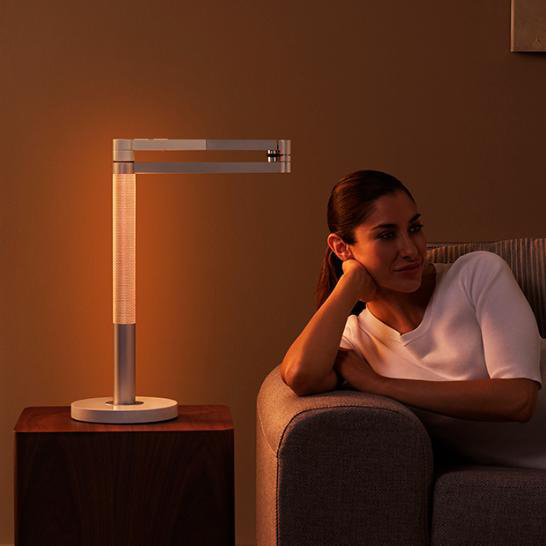Dyson's Smart, Flexible-Application Lightcycle Morph Lamp
At least five great design features, and one lamely expensive one
I'm not 100% sold on the aesthetics (I'm 90% of the way there), but I find this Lightcycle Morph lamp by Dyson to be a very intelligent design.

Although it resembles a task lamp, it is far more flexible, offering four lighting configurations: Task...

..."feature"...

...indirect...

...and ambient.


The lighting temperature is easily user-controllable via a sensor on the top, which you slide your finger along. (I'd have preferred a physical slider to a touch-capacitive strip, but this is 2023 and we can't have nice things anymore.)

There's a single charging port near the base of the stem.

Furthermore, the light is "smart"—place a book beneath it, and a light-measuring sensor automatically dims the light as needed, so as not to blind you with the reflectiveness of the white pages. Remove the book, and the light goes back to its previous setting.

The pictures don't do a great job telling the story of the lamp. Here's Dyson Expert Shane demonstrating the lamp's four applications:
Enter a caption (optional)
The feature I could do without: The lamp uses GPS(!) and an onboard chip to "intelligently [track] the colour temperature and brightness for your local daylight," providing illumination inside that's similar to what's going on outside. The onboard tech required for this unnecessary trick drives the price up to a whopping £500 (USD $620) for the table model and £650 (USD $806) for the floor-standing. It's a pity they cannot be purchased without the daylight-matching feature.
-
o2Favorite This
-
Q4Comment
K
{Welcome
Create a Core77 Account
Already have an account? Sign In
By creating a Core77 account you confirm that you accept the Terms of Use
K
Reset Password
Please enter your email and we will send an email to reset your password.

Comments
I know the backstory of this lamp as I was in Dyson when it was being developed.
I'm I the only one who feels like this is driven to much by rational engineering but fundamentally without understanding what people actually want and need? In a way this is a clever lighting solution with different functionalities embedded, but I'd never want this is in my home. A lamp as an object is so much more than a lighting source, and the buying decisions involved are much different than f.ex a vacuum cleaner. It also feels ridiculously over-engineered for the job it has do; Dyson should take a lesson on how to do more with less.
I bought the floor lamp version of the Dyson Lightcycle Morph™ floor light (White/Silver) when it was on a 20% off sale in October of 2020. I am not sure how the version I have differs from the current version. I have not used the app.
My resistance to the purchase of a lamp with "integrated", "built-in", or "circuit-on-board" LED modules that are not user-replaceable was hard to overcome. LED lighting was initially promoted because it was supposed to save energy. It does that, but in many cases, the product is more future landfill. Some manufacturers can replace the LED module if you return the lamp to them and some cannot. I have seen no information from Dyson about this issue.
The quality of the light is outstanding, as is the ability to control the brightness and color temperature. It is both entertaining and instructive to put a familiar object under it, change the light, and see the object literally in a new light. I have to remind myself to stop asking "But what does it really look like?".
I have the motion detector feature turned on. Five minutes after I go to bed, the brightness goes down smoothly to about half of the previous level for five seconds, and then fades to black. When I wake up in the morning, I wave at the lamp, and the brightness smoothly increases to the saved brightness level. This feature is extremely addictive.
A few times since October 2020, the settings for brightness and color temperature have been lost, and the motion sensor stopped working. I unplugged the lamp, waited a minute, and plugged it in again. You are doubtless familiar with this procedure. In each case, it worked.
The best advice I can provide is to not allow any disappointments, criticisms, or problems you may have had with other Dyson products prejudice you from considering this one. I usually strongly dislike spoilers, but here comes one: The cardboard box in which the floor lamp is supplied serves as a giant cardboard vice that holds the base and stem in place, so you can screw them together easily. It took me quite a while to stop smiling after I saw that. This is one of the rare cases of "Stone Age to Star Trek in five minutes."
Eh? These lamps connect to mobile phones via a Bluetooth chip. Some lamp settings such as what time you wish the lamp to turn, or where you are in the world, are controlled via an app on the phone. There is no GPS hardware, or WiFi, in the lamp. GPS receivers alone don't work well indoors anyway (mobile phones gain their rough location from known WiFi routers and cell towers to speed up their acquisition of GPS satellite signals )